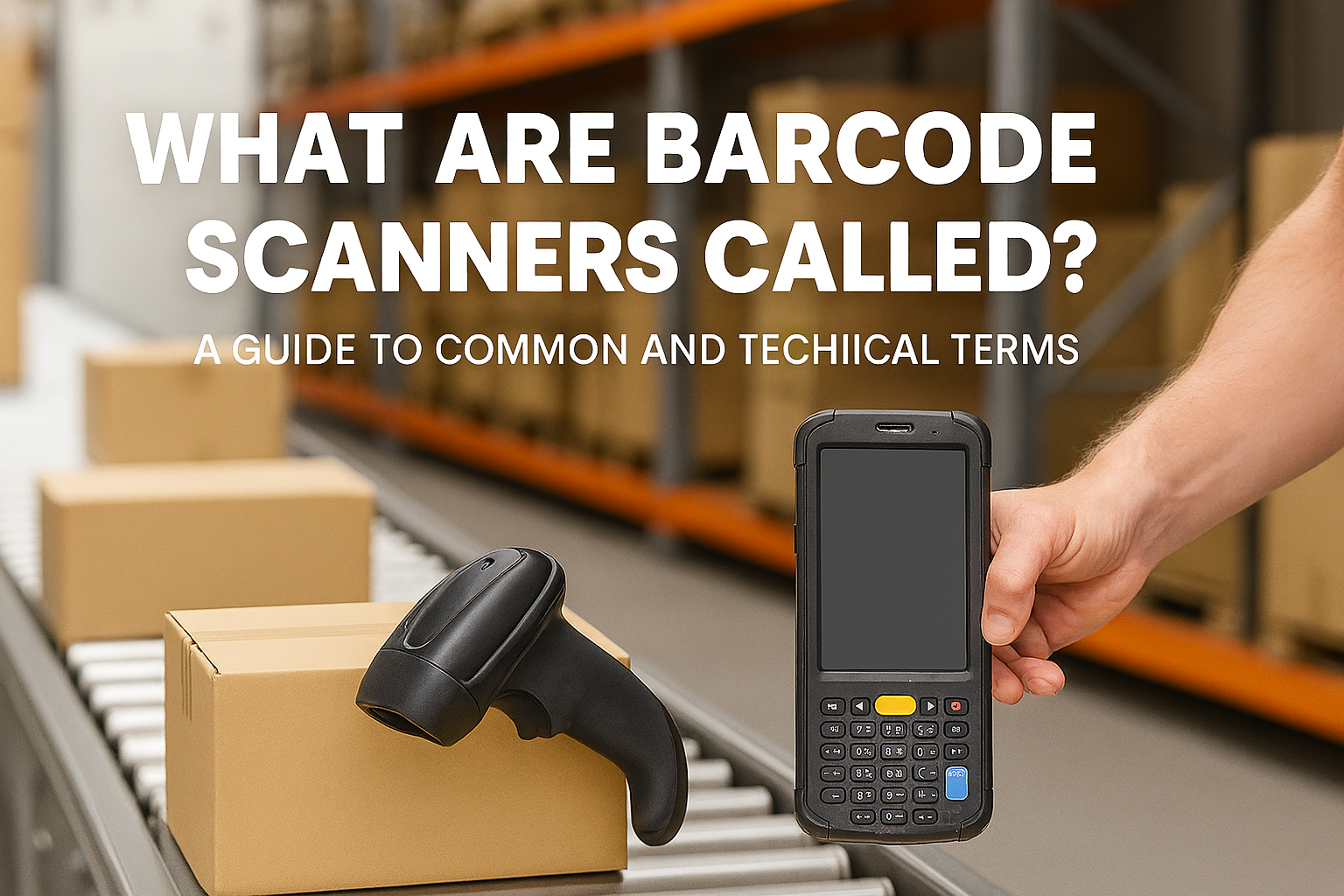
Whether you’re a warehouse manager, retailer, or tech buyer, you’ve probably seen barcode scanning devices referred to by many different names. So, what are barcode scanners actually called? And do all these terms mean the same thing?
In this article, we’ll break down the most common, technical, and industry-specific names for barcode scanners to help you speak the language of logistics, inventory, and retail like a pro.
Key Takeaways
Barcode scanners have many names. Some names are barcode scanner, barcode reader, price scanner, and POS scanner. These names show where and how they are used.
There are different types of barcode scanners. Some are handheld, fixed-mount, in-counter, presentation, mobile, and wearable. Each type is made for a special job or place.
Barcode scanners use different technologies. Some use laser, CCD, or image-based scanning. Each technology is good for reading certain barcode types.
Picking the right barcode scanner depends on your work area. It also depends on barcode types, how much you move, and if it works with your devices.
Using the right scanner and words helps you work faster. It also helps you make fewer mistakes and be more accurate in stores, warehouses, hospitals, and other places.
What Are Barcode Scanners Called
Common Names
If you ask what barcode scanners are called, you will hear many names. The most used name is barcode scanner. Some people also say barcode reader. Both names mean a tool that scans and reads barcodes fast. In stores, people sometimes call it a price scanner. This tool checks the price of things by scanning their barcode. At checkout, workers use a POS scanner. POS means Point of Sale. This scanner helps scan product codes to finish sales.
Barcode scanners are important in many jobs. Honeywell says barcode scanners are needed for warehouse work, tracking items, and store checkouts. These tools help scan barcodes so work is faster and more correct.
Here is a table that shows the main names and where you see them:
Name | Where You See It Used |
|---|---|
Barcode scanner | Stores, warehouses, and offices |
Barcode reader | Libraries, labs, hospitals |
Scanner Gun | Warehousing, logistics (colloquial) |
Wireless Scanner | Tech and hardware listings |
Laser Scanner | retail point-of-sale & grocery use |
QR Code Scanner | Smartphone apps, 2d scanners devices |
Imager Reader | when referring to camera-based scanners |
Inventory Scanner | eCommerce, warehouse operations |
Price scanner | Retail stores |
POS scanner | Checkout counters |
RFID Scanner | when combined with barcode functionality |
Alternative Names
Barcode scanners have other names too. Some people call them data collectors. They collect info from barcodes. In some places, people say inventory scanner. This tool helps count products in stores or warehouses. Another name is asset tracker. This tool helps find and manage important items by scanning barcodes.
Presentation scanner: Used for fast, hands-free scanning at checkout.
Wearable scanner: Worn on your finger or wrist for easy scanning in warehouses.
Mobile scanner: Connects to your phone or tablet for scanning on the go.
These other names tell you about the type of scanner or how you use it. For example, wearable scanners let you scan without using your hands. This is good when you are busy in a warehouse.
Industry Terms
Different jobs use special words for barcode scanners. In hospitals, you may hear healthcare scanner. This scanner is made to be clean and safe for patients. In shipping, people use high-performance scanner. This scanner can read barcodes from far away and scan papers. In factories, you might hear 2D data matrix code reader or multi-core microprocessor scanner. These names show the scanner has special features for tracking parts.
Barcode scanners with smart software can read many barcode types. These include QR codes, Data Matrix codes, and PDF 417 barcodes. These features help match patients, track products, and manage store stock. Using the right word helps you pick the best barcode reader.
Here are some special terms you might see:
QR code scanner: Used in marketing and customer engagement.
Data Matrix scanner: Common in logistics and shipping.
PDF 417 scanner: Used for ID cards and distribution.
3D barcode reader: Tracks complex parts in manufacturing.
4D barcode scanner: Used in aerospace for tracking over time.
Knowing what barcode scanners are called in different places helps you pick the right one. Each name tells you about a special use or feature. This makes it easier to find the best barcode reader for your work.
Barcode Reader vs. Barcode Scanner
Usage Differences
You might think barcode reader and barcode scanner are the same. People use these words in different ways. A barcode reader is a device that scans and decodes barcodes. It sends the data to your computer or system. You can find a barcode reader in places like libraries or hospitals. These places need to track items or patient records. A barcode scanner is a tool that captures the barcode image. Some scanners only scan, but others can also decode.
Here is a simple table to show the difference:
Term | Main Use | Example Place |
|---|---|---|
Barcode reader | Scans and decodes barcodes | Hospitals, labs |
Barcode scanner | Scans barcodes (may decode too) | Retail stores(retail point-of-sale) |
Some people use these words for the same device. But knowing the difference helps you pick the right tool. When you look for a barcode reader, check if you need scanning or both scanning and decoding.
Tip: Always read the product details. Make sure the barcode reader can decode the types you use in your business.
Functional Similarities
Both barcode readers and barcode scanners help you collect data fast. You can use either one to read product codes or track inventory. They also help manage assets. Most barcode readers work with many barcode scanner types. These include handheld, fixed-mount, or mobile models.
Here are some things both devices can do:
Read 1D and 2D barcodes
Make checkout or inventory tasks faster
Lower mistakes from typing by hand
You can use a barcode reader in stores or warehouses. The main goal is to make work faster and more correct. When you compare barcode readers, you will see most have similar features. They scan fast and connect easily to your computer.
Types of Barcode Scanners
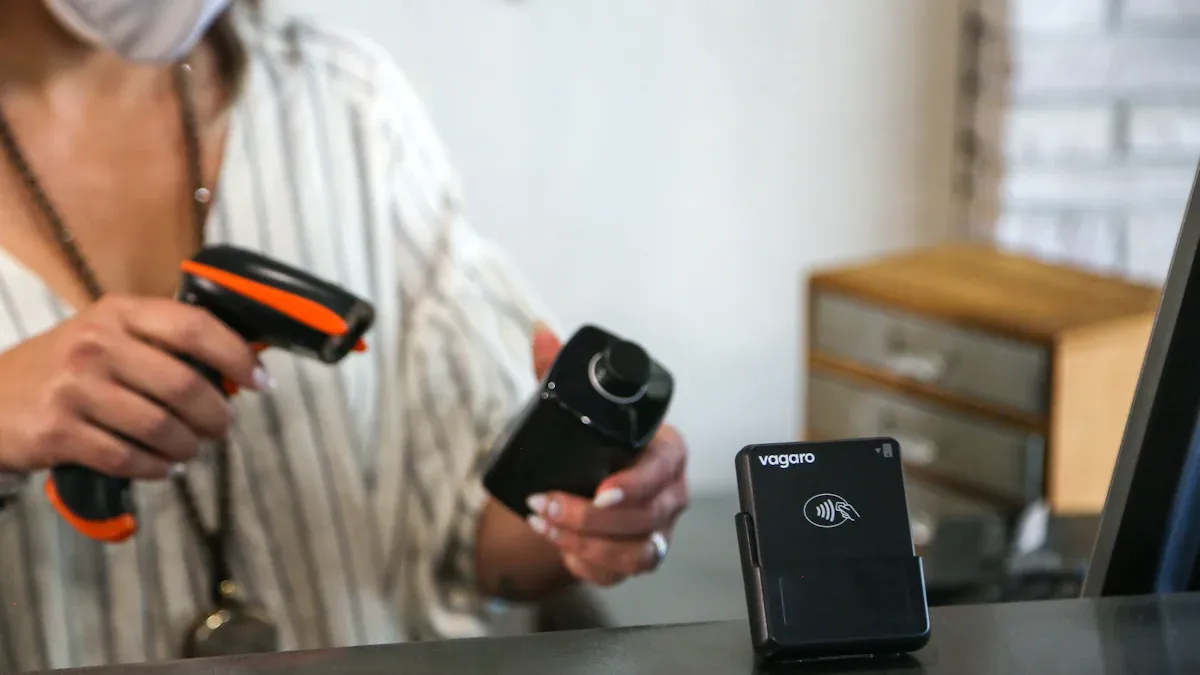
There are many kinds of barcode scanners. Each kind works best for a certain job or place. You can pick the right one if you know how they work.
Handheld
Handheld barcode scanners are used the most. You hold them and point them at a barcode. They work in stores, warehouses, and hospitals. You can scan things on shelves or at checkout. These scanners help you count items much faster than by hand. They also help stop mistakes and make data easy to share. Many stores use them because they are easy to carry and simple to use. Some are wireless or use Bluetooth, so you can walk around.
Handheld barcode scanners are the biggest part of the market. By 2037, they may have about 61.8% of the market. People like them because they work well and can do many jobs.
Fixed-Mount
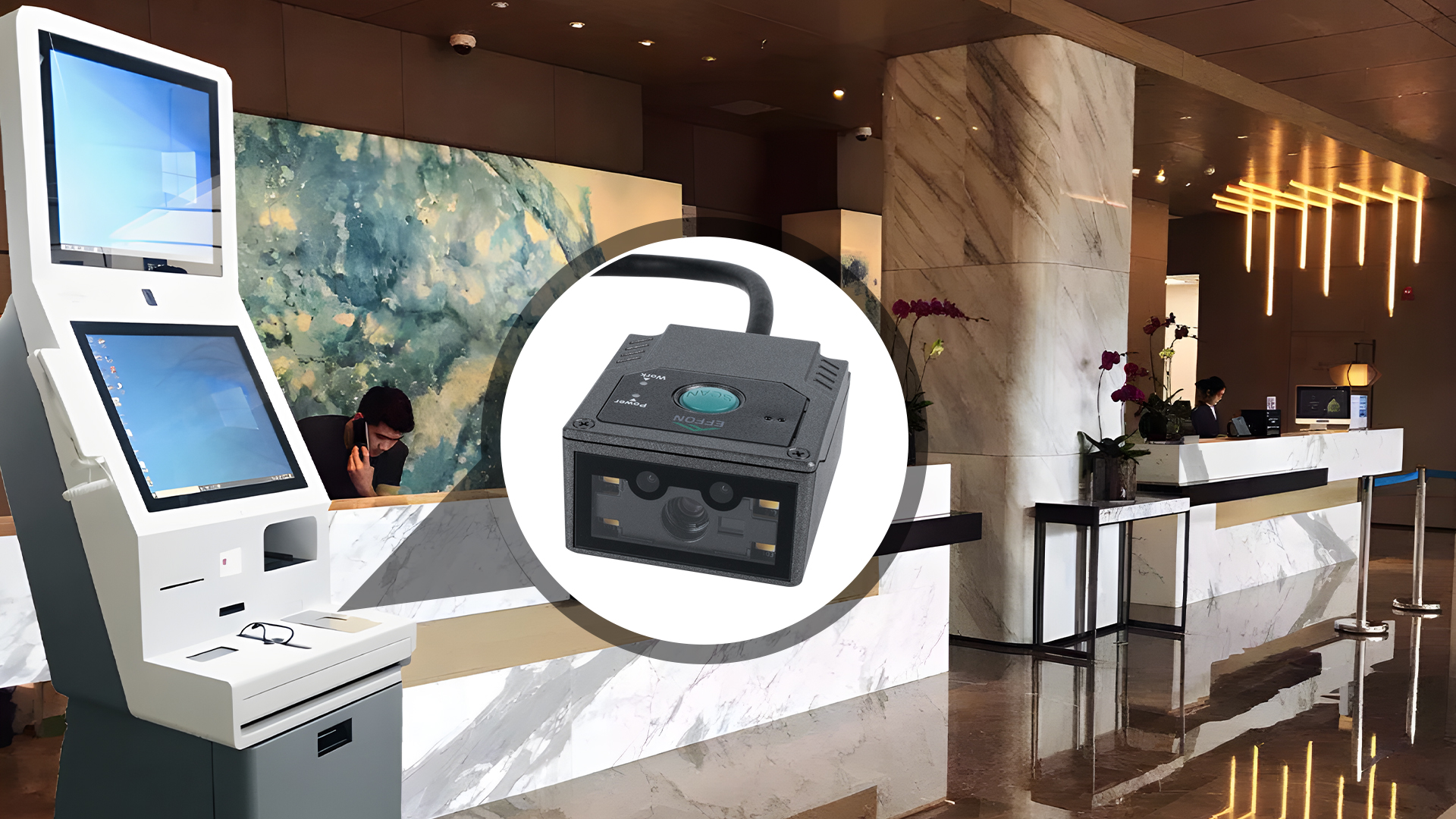
Fixed mount barcode scanners stay in one spot. You see them on conveyor belts or in factories. These scanners read barcodes as things move past. You do not need to hold or aim them. They are best for places where things move fast and need to be scanned quickly. Fixed-mount scanners help scan fast and cut down on manual work.
Barcode Scanner Type | Market Valuation 2024 (USD Billion) | Projected 2035 (USD Billion) | Key Drivers |
|---|---|---|---|
Fixed Mount | 0.9 | Automation, assembly lines |
In-Counter
In-counter scanners are built into checkout counters. You find them in grocery stores and big shops. You slide or put items over the scanner, and it reads the barcode. This helps cashiers scan lots of things quickly. In-counter scanners can also read loyalty cards and coupons. They are very common in busy stores.
Presentation
Presentation scanners sit on a counter. You show items to the scanner instead of picking it up. These scanners can read barcodes from a wide area. They are used in stores, libraries, and supermarkets. You can use them with in-counter scanners for even faster checkout. Presentation scanners are good when you do not have a huge number of items to scan.
Mobile
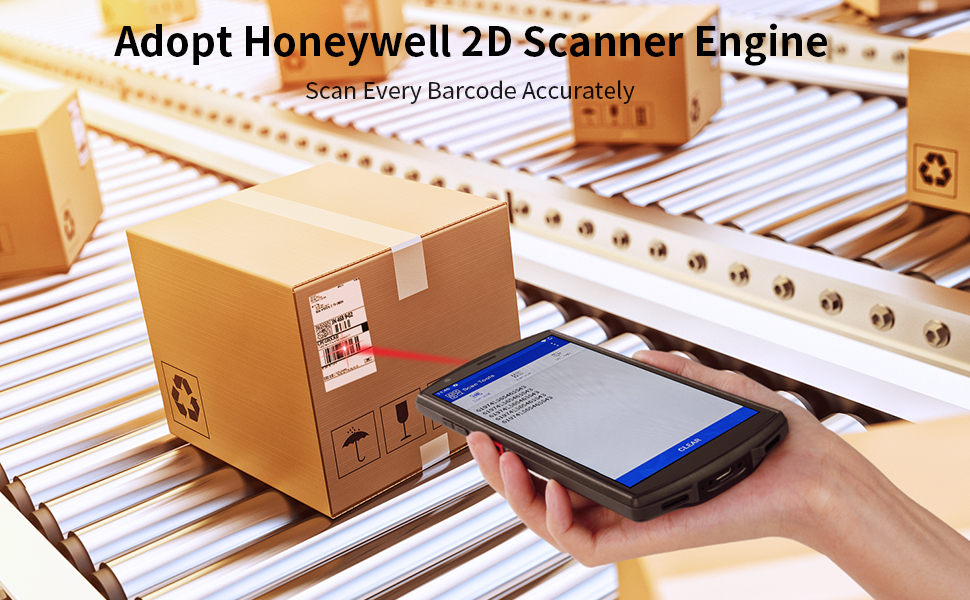
Mobile barcode scanners let you scan and use a computer at the same time. You can carry them like a smartphone. They connect to wireless networks and help you check prices or track things. Mobile scanners are popular in warehouses, stores, and for delivery work. They let you get and send data right away, no matter where you are.
Wearable

Wearable scanners go on your finger or wrist. You can scan barcodes and keep your hands free. These are great for warehouses and shipping jobs. Workers move faster and scan more because they do not have to pick up a scanner each time. Wearable barcode scanners help people work faster and get more done.
Each barcode scanner type is made for a special job. If you pick the right one, your work will be easier and faster.
Barcode Scanner Technologies
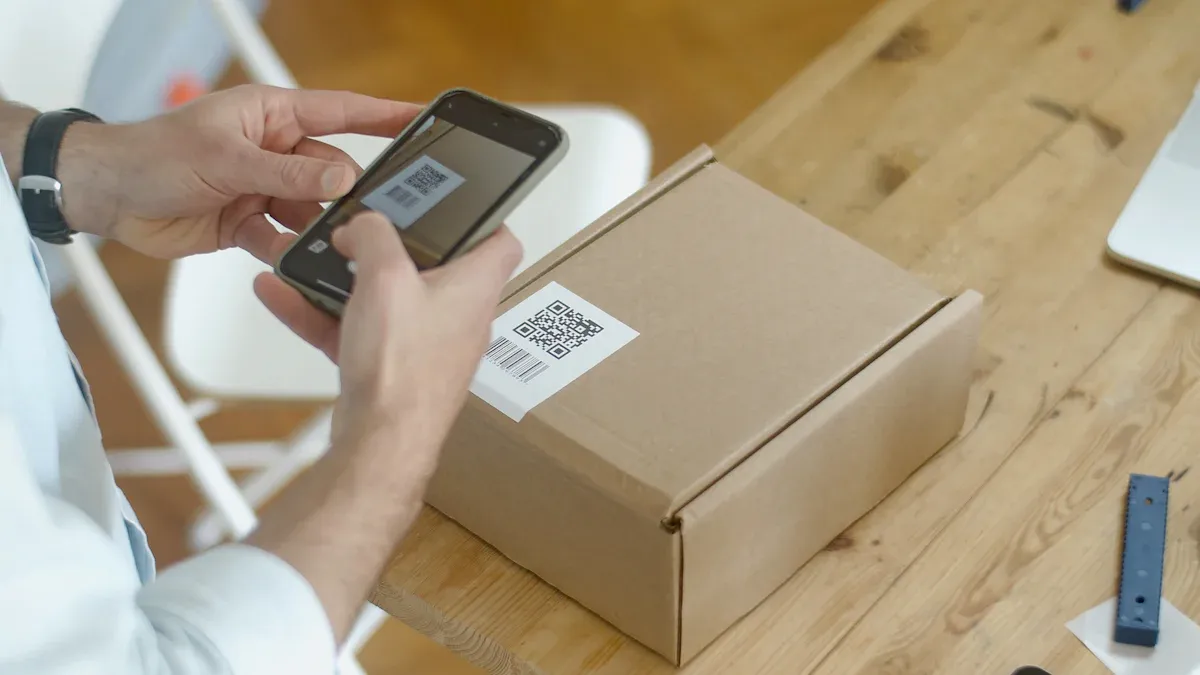
Barcode scanners use different ways to read barcodes. Each way has its own good points. You can pick the best one if you know how they work.
Laser
Laser scanners use a laser beam to read barcodes. The scanner moves the laser over the barcode and sees the light that bounces back. You see these scanners in stores because they read 1d scanners like UPC and Code 128 fast. 1D Laser barcode scanners have moving parts, like mirrors, that can break after a while. They are good for scanning from far away but cannot read hard 2D barcodes like QR codes. 1D laser scanners may not work well in bright light and use more power than other types.
Tip: Laser barcode scanners are quick and correct for simple barcodes, but they cannot read every kind.
CCD (LED)
CCD barcode readers use many tiny light sensors to take a picture of the barcode. You need to hold the scanner close, usually less than 10 inches away. CCD scanners do not have moving parts, so they last longer and are tougher than laser scanners. They work well in bright or dim light and use less power, so they are good for mobile devices. CCD scanners are liked by small businesses because they are cheap and work well. But they only scan from close up and may be slow with faded or crooked barcodes. Most CCD scanners read 1D barcodes, but some new ones can read 2d barcode scanners.
They work well in all kinds of light.
They cost less and last longer than laser scanners.
Image (Camera-Based)
Image-based scanners use a small camera to snap a picture of the barcode. The scanner then reads the barcode from the picture. You can use these scanners for both 1D and 2D barcodes. Image scanners do not have moving parts, so they are strong and need little fixing. They work well with barcodes that are damaged or printed badly. You often see image scanners in hospitals, shipping, and stores.
2D Imager (Area Imager)
2D imagers, also called area imagers, can read barcodes from any angle. They use smart sensors to get the whole barcode at once. You can scan QR codes, Data Matrix, and other 2D barcodes with these scanners. 2d barcode scanners work fast and can scan barcodes on screens, paper, or round things. The market for 2D imagers is growing fast, with a value of $1.5 billion by 2025 and a 15% yearly growth rate. Stores, shipping, and hospitals use these scanners for fast data and automation.
Omnidirectional
Omnidirectional scanners use many laser beams or sensors to read barcodes from any direction. You do not have to line up the barcode just right. These scanners make checkout faster in busy stores and help in warehouses. Omnidirectional and 2D imagers are popular because they save time and lower mistakes. North America uses them the most, but Asia-Pacific is growing fastest because of online shopping and factories.
Aspect | Details |
|---|---|
Market CAGR | About 15% (Compound Annual Growth Rate) |
Market Value Projection | About $1.5 billion by 2025, with big growth through 2033 |
Key Technologies | Omnidirectional scanners, 2D imagers |
Regional Adoption Highlights | North America: Market leader; Asia-Pacific: Fastest growth; Europe: Steady growth |
Dominant Market Segments | Retail, Logistics, Healthcare, Manufacturing |
Note: Pick the right technology based on what you scan, the barcode type, and where you work.
Popular Subtypes and Nicknames
Pen Wand
You may see pen wand scanners in small stores or libraries. This type of barcode scanner looks like a thick pen. You hold the pen wand and drag its tip across the barcode. The scanner reads the lines as you move. Pen wands are light and easy to use. They cost less than many other barcode scanners. You need to move your hand at a steady speed for the scanner to work well. Pen wands work best for low-volume scanning.
Tip: Pen wands are great for learning how barcode scanners work because you can see the scanning process up close.
Slot Scanner
Slot scanners help you scan cards or tickets with barcodes. You slide the card through a slot in the scanner. The scanner reads the barcode as the card moves past the sensor. You often find slot scanners at access control points, like in parking garages or libraries. These barcode scanners work well for scanning ID cards or membership cards. Slot scanners do not move, so you must move the card yourself.
Gun-Style
Gun-style barcode scanners look like a pistol. You hold the handle and pull the trigger to scan. These scanners are common in retail and warehouses. Gun-style barcode scanners are easy to aim and use. You can scan many items quickly with this design. The trigger makes scanning feel natural and fast. Many types of barcode scanners use this shape because it is comfortable for long shifts.
Subtype | Main Use | Special Feature |
|---|---|---|
Gun-Style | Retail, warehouse | Trigger for scanning |
Wireless & Bluetooth
Wireless and Bluetooth barcode scanners let you move freely. You do not need to stay near a computer or cash register. These scanners connect to devices using Bluetooth or Wi-Fi. You can scan items on shelves, in storage rooms, or even outside. Wireless barcode scanners help you work faster and cover more space. Many types of barcode scanners now offer wireless options. You can use them with tablets, phones, or computers.
Wireless barcode scanners are perfect for busy stores and large warehouses. You can scan items anywhere without being tied down.
Industry-Specific Terminology
Retail & POS
Barcode scanners are used a lot in stores. People call them checkout scanners, price checkers, or POS scanners. These tools help scan things fast at the register. In stores, you might hear names like handheld scanner, in-counter scanner, or presentation scanner. Each one is good for a different job. In-counter scanners stay inside the checkout lane. Handheld scanners are best for big or heavy things. POS systems use these scanners to make sales faster and keep track of products.
Barcode scanners in stores help lines move quickly. They also help you know what is in stock and what you need to buy.
Here is a table with common scanner names in stores:
Term | Where Used | Main Purpose |
|---|---|---|
Checkout scanner | Cash register | Scan items at sale |
Price checker | Store aisles | Check item prices |
POS scanner | Retail counters | Complete transactions |
Warehouse & Logistics
In warehouses, barcode scanners help track and move goods. People call them inventory scanners, picking scanners, or shipping scanners. These scanners help you find things, check shipments, and update records. You often see wearable or mobile scanners here. Workers use them to scan boxes while walking around. This makes work faster and helps stop mistakes.
Inventory scanner: Tracks products on shelves.
Picking scanner: Helps you find and pick the right items.
Shipping scanner: Checks packages before they leave.
These scanners help your warehouse run well. They save time and help you avoid errors.
Healthcare & Labs
In hospitals, barcode scanners have special names. People say patient ID scanner, medication scanner, or specimen scanner. These scanners help match patients to their records, check medicines, and track lab samples. Some labs use smartphones as barcode scanners. Scientists made tests that use barcodes, like Code 39, on strips. You can scan these strips with a phone app to get results. This makes testing easy and cheap, even in places with little money.
Barcode scanners in healthcare keep patients safe. They help you give the right medicine and track samples for quick results.
Library & Education
In libraries and schools, barcode scanners help check out books and track supplies. People call them book scanners, circulation scanners, or student ID scanners. These scanners help you check books in and out, manage student records, and keep track of equipment. You often see handheld or presentation scanners in these places. They make it easy to scan barcodes on books or ID cards.
Book scanner: Checks books in and out.
Circulation scanner: Manages library records.
Student ID scanner: Tracks attendance or borrowing.
These scanners help keep your library or classroom neat. You always know where each book or item is.
Barcode Scanner Abbreviations
Common Abbreviations
When you read about barcode scanners, you will see many abbreviations. These short forms make it easier to read guides and manuals. Here are some of the most common ones you might see:
1D: One-Dimensional (linear) barcode
2D: Two-Dimensional barcode (like QR codes)
POS: Point of Sale
CCD: Charge-Coupled Device
UPC: Universal Product Code
EAN: European Article Number
PDF417: Portable Data File 417 (a stacked linear barcode)
GS1: Global Standards One (organization for barcode standards)
QR: Quick Response (code)
RFID: Radio Frequency Identification
You might also see names like “2D Imager” or “CCD Scanner.” These help you know which scanner type you need.
What They Mean
Each abbreviation has its own meaning in barcode technology. You can use these words to compare different barcode scanner types. Here is a table to show what each abbreviation stands for:
Abbreviation | Full Name | What It Refers To |
|---|---|---|
1D | One-Dimensional | Basic barcodes with lines |
2D | Two-Dimensional | Barcodes with patterns (QR, DataMatrix) |
POS | Point of Sale | Checkout systems in stores |
CCD | Charge-Coupled Device | A type of barcode scanner sensor |
UPC | Universal Product Code | Barcode used in retail |
EAN | European Article Number | Barcode used worldwide |
PDF417 | Portable Data File 417 | Stacked barcode for IDs and shipping |
GS1 | Global Standards One | Organization for barcode rules |
QR | Quick Response | Popular 2D barcode type |
RFID | Radio Frequency Identification | Wireless tracking technology |
The GS1 Style Guide gives rules for using these abbreviations. You should use short and simple forms. For example, write “GS1-128” or “GS1 DataMatrix” instead of just “barcode symbol.” When you see measurements, GS1 rounds X-dimensions to three decimal places in millimeters and four in inches. If you want to change inches to millimeters, multiply by 25.4. These tips help you read technical details for all barcode scanners.
Tip: When you read about barcode scanner types, look for these abbreviations. They help you compare features and pick the best scanner for your needs.
Choosing the Right Barcode Scanner
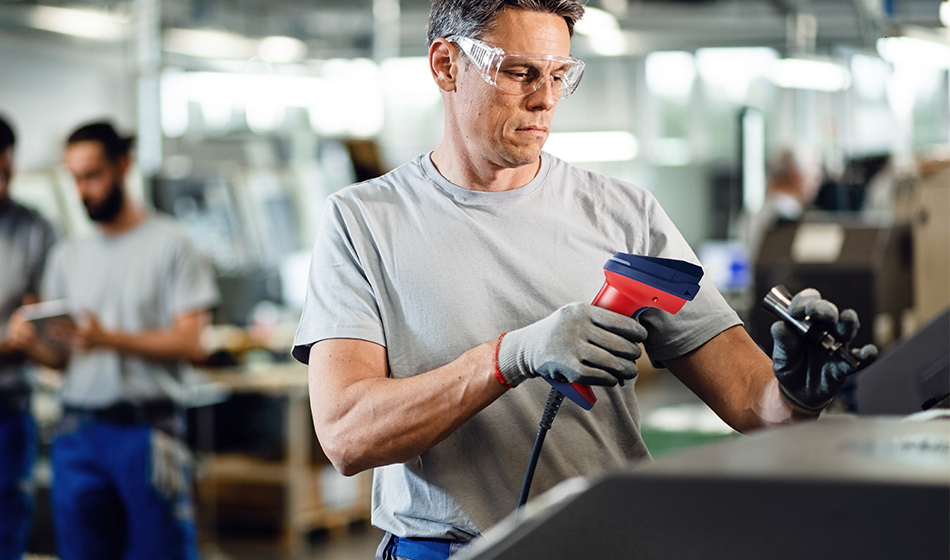
Matching Types to Use Cases
You need to pick the right barcode scanner for your job. Each scanner type is made for a different task. Handheld scanners are good for stores and shipping. You can carry them and scan many things fast. Fixed scanners stay in one spot and scan items as they go by. These are great for factories or on assembly lines. Wearable scanners help workers in warehouses. They let you use both hands while picking and packing.
RF barcode scanners let you move around and get updates right away. This helps you keep track of items and makes work smoother.
Rugged Barcode scanners are tough and last longer in hard places. They have strong batteries and connect better, so you make fewer mistakes and stop less.
Some barcodes, like PDF417 or Data Matrix, need special scanners. Using the right scanner for each barcode makes your work faster and more correct.
A new study says companies do better when they pick the right barcode scanner for their work. Stores use handheld scanners at checkout. Hospitals use scanners for patient ID and medicine. Picking the right scanner helps customers and keeps things running well.
Tips for Selection
Think about what you need before you choose a barcode scanner. Here are some tips to help you:
Know Your Environment: If you work in a warehouse, pick a rugged barcode scanners. For a store, use a handheld or in-counter scanner.
Check Barcode Types: Make sure your scanner can read the barcodes you use, like 1D, 2D, or QR codes.
Think About Mobility: If you need to walk around, pick a wireless or wearable scanner.
Look for Compatibility: Your scanner should work with your computer or POS system.
Consider Battery Life: If you work long hours, choose a scanner with a strong battery.
Tip: Train your team and take care of your scanners. This helps you avoid mistakes and keeps your business working well.
The right barcode reader or scanner saves time and cuts down on mistakes. Picking the best scanner for your job is the key to doing well.
You now know the main names and types of barcode scanners. Some examples are handheld, mobile, and wearable models. Using the right words helps you talk clearly at work. The GS1 rules say using standard words and short forms helps teams work better. Studies show that picking the right barcode scanner makes work more accurate and smooth. Use this guide to help you choose the best barcode reader or scanner for your job.
Aspect | Details |
|---|---|
Market Size 2024 | |
Market Size Forecast 2033 | USD 9.89 Billion |
CAGR (2026-2033) | 6.65% |
Always remember, picking the right barcode scanner helps you work faster and make fewer mistakes in any job.
FAQ
What are the main types of barcode scanners?
There are many kinds of barcode scanners. Some are handheld, fixed-mount, in-counter, presentation, mobile, and wearable. Each kind is best for certain jobs. Pick the one that fits your needs.
How do types of barcode reader differ from types of barcode scanner?
People often use both words for the same thing. Sometimes, “barcode reader” means a device that decodes barcodes. “Barcode scanner” can mean any device that scans barcodes. You can use either word when talking about barcode tools.
Which types of barcode scanner work with smartphones?
Mobile computer barcode scanners can connect to smartphones by Bluetooth or USB. You can also use your phone’s camera as a barcode reader with special apps. These ways help you scan barcodes anywhere you go.
Can one scanner read all barcode types?
Most new barcode scanners can read many barcode types. They work with 1D and 2D codes. Always check what the scanner can do before you buy it. Some scanners only read certain codes, so match your scanner to your barcode type.
Where do you use different types of barcode scanners?
Handheld scanners are used in stores and warehouses. Fixed-mount scanners are used on assembly lines. Wearable scanners are good for busy warehouses. In-counter scanners are found at checkout lanes. Each scanner type is made for a special job.

